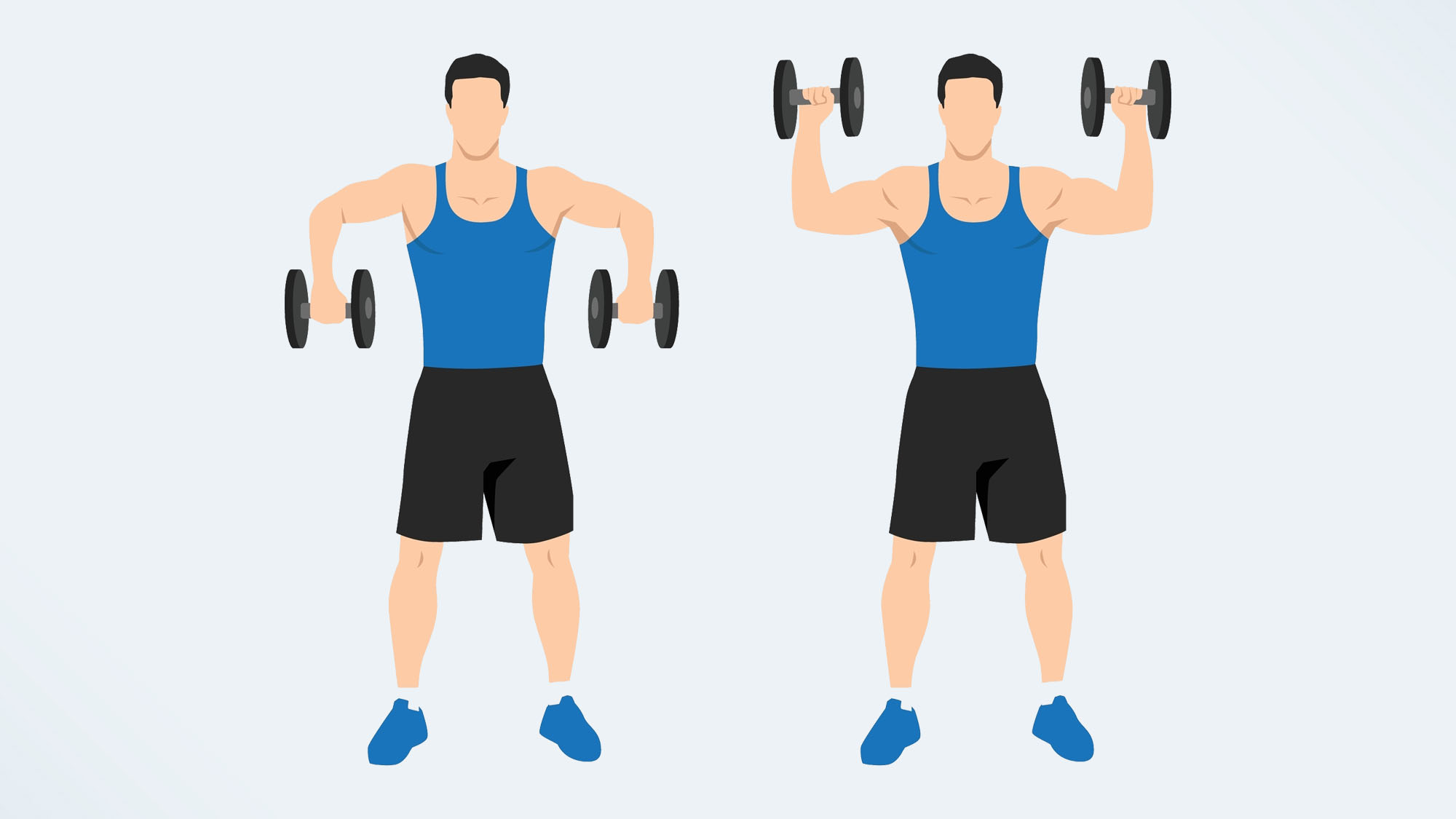I did the "scarecrow dumbbell" every day — what this weird exercise did to my body
Crazy name, eye-catching move, but how do you do it?

It’s only when you spend some time in a gym or dive deep into the murky online world (bring a rope so that you can find your way back) that you see how many dumbbell exercises there are. This is, generally, a good thing, as the more moves you can do with one set of weights, the better.
I had never heard of the dumbbell scarecrow before my editor set me the challenge of doing it every day for a week, but once I looked it up, I thought, “Oh yeah, that makes sense. In fact, I now wonder why I did not consider this before.” I often have such conversations with myself. I’m not sure if they’re helpful. Or healthy.
What is the scarecrow dumbbell?
This move (also known as the dumbbell scarecrow, which seems more judgmental) primarily works the shoulder muscles, specifically the side and rear deltoids, which wrap around the top of the shoulder. It also hits the trapezius, the large upper back muscle that extends across the shoulders. You’ll be using your core to maintain stability and form, but that’s a given. Because of its complexity and the wide range of motion it offers, the shoulder is extremely easily damaged, so if you feel any pain in the area, stop this exercise immediately. Shoulder injuries can take weeks or months to heal.
How do I do the scarecrow dumbbell move?

In short, you create a goalpost with your arms and, from there, move them up and down. I’ve never seen a scarecrow in this position, but I’m not from a farming background, so my exposure to them has been limited to The Wizard of Oz and horror movies. Here’s how you do it:
- Stand with your feet a little less than shoulder-width apart, holding a dumbbell in each hand by your sides. Start light, to ensure you can do several reps and sets.
- Raise your arms until they are parallel to the floor and in line with your shoulders. Bend your elbows to form a 90-degree angle.
- From here, maintaining the 90-degree angle, rotate your shoulders until your forearms are pointing straight up. Rotate back down, maintaining the angle, so your forearms are again in line with your shoulders. This is one rep.
- Begin with three sets of 10 and progress from there.
I did the scarecrow dumbbell for a week, and this is what I learned
I’m not one for admiring myself in the mirror, not even while I lift weights, but it can be useful to observe form as you come to grips with certain moves — this is one of them. Your body will automatically make an exercise as easy for you as possible (it means well, even at the expense of doing something right). In this case, you may think you are creating a 90-degree angle with your arms, but take a look in a mirror: There’s a good chance your forearms will angle slightly in, towards your head, which makes the move easier, or they may lean the other way, away from you, which is asking for trouble.
Similarly, you may raise your upper arms too high at the beginning of your sets, or they may drop as you tire. This is a very specific move, and everything has to be in the right place to maximise the effect and ensure you don’t hurt yourself. Another thing to watch for (and you don’t need a mirror for this) is your shoulders remaining in a slightly forward position at the top of the move, so your forearms are not in line with your head. This is natural with tiredness, but correct it if you see it. Form is everything.
Going through the motions
I began the week with 11lb dumbbells, and I stuck with them, except when I tried a variation. You do not need big weights for this move. In fact, try it with no weights if you’re concerned that your shoulders are not ready to lift. You will feel a burn after several reps. On day one, I did two sets of 20 and one of 15, and felt it across my shoulders and through my upper arms.
Get instant access to breaking news, the hottest reviews, great deals and helpful tips.
Do this one slowly to ensure good form — movement is limited, but a lot can go wrong. I’ve already noted the danger to the shoulder if you load on the weight, but the same holds for the wrist. If your dumbbell is too heavy, you may find your wrists tilting in or out at the top of the move. By the end of the week, I was up to three sets of 25 with little difficulty.
One thing I noticed in the gym was that the narrower handles on their dumbbells made the move more difficult. That said, the wide, full-length mirror made it easier to keep an eye on my form. Of course, a wide, full-length mirror is also mercilessly unforgiving, so it’s a trade-off.
Variety is a little spicy
I’ve seen a few variations on this, so I thought I’d try a couple. One involves doing the move with a hinge in the hips. The angle of your upper body means you have to work harder to raise and lower the weights with control — thanks, gravity.
The other variation I tried was to hold my arms by my sides, palms facing back, with only a slight bend in my elbows. From here, using lighter weights, I raised my arms about eight inches before returning to the start position. This did not work for me at all. I felt a sharp pull in my triceps, which suggested I was continuing to bend my elbow as I raised my arm. This is one sure way to strain a muscle. If you are going to try this advanced variation, be sure you already have strong, stable shoulder and upper arm muscles, and use a lighter weight.
At the end of the week
After a week, you know if an exercise suits, and this one just didn’t hit the spot for me. It does target the shoulders, but there are plenty of other moves that do the same. It could be argued that it specifically hits the lateral delts (which help give the shoulders their rounded profile), but so does the lateral raise, a move that likely will be more familiar than the scarecrow dumbbell. Dumbbell shrugs are another option, and they also hit your trapezius muscles. And if you really want to bring your core into play, try the floor-seated dumbbell shoulder press. As with any of these challenges, I recommend you try it out. Who knows, it may fit you like an old, shabby set of clothes. Or you may not care two straws for it.
More from Tom's Guide
- I tried the 5-4-5 walking technique for a week — and it boosted my fitness and mood
- How to lose weight and get in shape by walking
- This one simple exercise reduces stiffness in your hips and boosts mobility — according to a personal trainer
John is a writer and editor based in London. He was worked for magazines such as Runner’s World, Men’s Health, Women’s Health and Cosmopolitan. A keen runner, what he lacks in ability he makes up for with enthusiasm and excuses.
You must confirm your public display name before commenting
Please logout and then login again, you will then be prompted to enter your display name.

